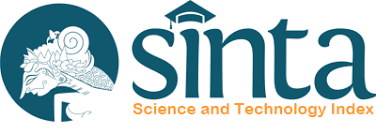Analisis Hubungan dan Prediksi Depresi Mahasiswa Berdasarkan Faktor Akademik dan Gender
Keywords:
Student Depression, Academic Pressure, Gender, Logistic Regression, Mental Health PredictionAbstract
This study aims to analyze the level of depression among university students by examining gender and several academic indicators. The dataset includes responses from 27,901 students across various regions, with variables covering age, gender, academic pressure, study satisfaction, work/study hours, CGPA, and depression status. The analytical methods applied in this study include the chi-square test to eval_uate the association between gender and depression status, point-biserial correlation to examine relationships between numeric variables and depression, and logistic regression to develop a prediction model. The chi-square test results revealed no significant relationship between gender and depression (p = 0.774), indicating that depression affects both genders. In contrast, academic pressure exhibited the strongest correlation with depression status (r = 0.47), followed by work/study hours (r = 0.209) and study satisfaction (r = -0.168). The Logistic Regression model constructed using the four most relevant variables demonstrated satisfactory performance, achieving 75.5% accuracy and 82.1% recall in identifying students experiencing depression. These findings highlight the critical role of academic-related factors—particularly academic pressure—in influencing students’ mental health. Therefore, targeted academic support strategies are essential to mitigate depression risks in higher education environments. Keywords— Student Depression, Academic Pressure, Gender, Logistic Regression, Mental Health PredictionReferences
World Health Organization, “Depression,” 2021. [Online]. Available: https://www.who.int/news-room/fact-sheets/detail/depression.
A. K. Ibrahim, S. J. Kelly, C. E. Adams, and C. Glazebrook, “A systematic review of studies of depression preval_ence in university students,” Journal of Psychiatric Research, vol. 47, no. 3, pp. 391–400, 2013. [Online]. Available: https://doi.org/10.1016/j.jpsychires.2012.11.015
F. Putri and M. Amalia, “Faktor-faktor yang mempengaruhi depresi pada mahasiswa,” Jurnal Psikologi, vol. 15, no. 1, pp. 33–45, 2020.
M. F. Triola, Elementary Statistics, 13th ed. Pearson, 2018.
A. Field, Discovering Statistics Using IBM SPSS Statistics, 5th ed. SAGE Publications, 2018.
D. M. Levine, D. F. Stephan, K. A. Szabat, Statistics for Managers Using Microsoft Excel, 8th ed. Pearson, 2020.
D. S. Moore, G. P. McCabe, and B. A. Craig, Introduction to the Practice of Statistics, 9th ed. W.H. Freeman, 2017.
D. W. Hosmer and S. Lemeshow, Applied Logistic Regression, 2nd ed. Wiley, 2000.
S. García, J. Luengo, and F. Herrera, Data Preprocessing in Data Mining. Springer, 2016.
Q. Mou, J. Zhuang, et al., “The relationship between social anxiety and academic engagement among Chinese college students: A serial mediation model,” Journal of Affective Disorders, vol. 311, pp. 247-253, 2022. [Online]. Available: https://doi.org/10.1016/j.jad.2022.04.158
Vu, Thien, et al., “Prediction of depressive disorder using machine learning approaches: findings from the NHANES,” BMC Medical Informatics and Decision Making, vol. 25, no. 83, 2025. [Online]. Available: https://doi.org/10.1186/s12911-025-02903-1
X. Wang, et al., “Application of machine learning in depression risk prediction for connective tissue diseases,” Scientific Reports, vol. 15, no. 1706, 2025. [Online]. Available: https://www.nature.com/articles/s41598-025-85890-7









